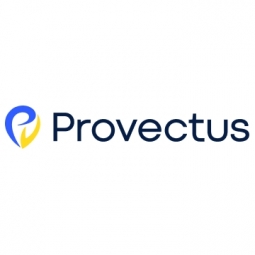技术
- 分析与建模 - 机器学习
- 平台即服务 (PaaS) - 应用开发平台
适用行业
- 水泥
- 建筑与基础设施
适用功能
- 物流运输
- 产品研发
用例
- 行为与情绪追踪
- 牲畜监测
服务
- 云规划/设计/实施服务
- 数据科学服务
关于客户
IMVU 是世界上最大的基于虚拟形象的社交网络,在这里,共享的经历可以建立更深的友谊并培养创造力,所有关系都很重要。在 IMVU,每月有超过 700 万用户定制自己的头像、与朋友聊天、购物、参加炫酷的派对,并通过创建虚拟产品赚取真金白银。
挑战
IMVU 希望增强和重新架构其老化的本地数据平台,以支持高级分析和机器学习用例。随着数据量呈指数增长和整体 Hadoop 架构,IMVU 团队面临着创新和更有效地利用用户生成数据的挑战。 IMVU 希望通过高级分析和数据流来增强和重新构建其平台。该公司是 Apache Hadoop 的先驱和早期采用者之一,在大数据技术成为主流之前就充分利用了它们。尽管 IMVU 拥有深厚的内部专业知识,但支持和升级其 90 节点 Hadoop 集群和内部构建的工具对他们来说仍然具有挑战性。
解决方案
IMVU 数据平台针对 AWS 云进行了重新架构。 Apache Hadoop 集群迁移到 Amazon EMR,Hive/Spark 作业得到优化,Apache Kafka 数据流镜像到云,以实现数据分析。 IMVU 与 Provectus 和 AWS 合作,提出了面向下一代架构的全面迁移和现代化战略。多阶段方法旨在确保业务连续性并解决迁移风险以及安全最佳实践。为了确保 IMVU 平台上数据分析的有效性和成本效益,他们的数据管道进行了现代化和重新架构,以满足现代数据平台的要求。为此,利用了开源解决方案和 AWS 服务。
运营影响
数量效益

Case Study missing?
Start adding your own!
Register with your work email and create a new case study profile for your business.
相关案例.

Case Study
System 800xA at Indian Cement Plants
Chettinad Cement recognized that further efficiencies could be achieved in its cement manufacturing process. It looked to investing in comprehensive operational and control technologies to manage and derive productivity and energy efficiency gains from the assets on Line 2, their second plant in India.

Case Study
IoT System for Tunnel Construction
The Zenitaka Corporation ('Zenitaka') has two major business areas: its architectural business focuses on structures such as government buildings, office buildings, and commercial facilities, while its civil engineering business is targeted at structures such as tunnels, bridges and dams. Within these areas, there presented two issues that have always persisted in regard to the construction of mountain tunnels. These issues are 'improving safety" and "reducing energy consumption". Mountain tunnels construction requires a massive amount of electricity. This is because there are many kinds of electrical equipment being used day and night, including construction machinery, construction lighting, and ventilating fan. Despite this, the amount of power consumption is generally not tightly managed. In many cases, the exact amount of power consumption is only ascertained when the bill from the power company becomes available. Sometimes, corporations install demand-monitoring equipment to help curb the maximum power demanded. However, even in these cases, the devices only allow the total volume of power consumption to be ascertained, or they may issue warnings to prevent the contracted volume of power from being exceeded. In order to tackle the issue of reducing power consumption, it was first necessary to obtain an accurate breakdown of how much power was being used in each particular area. In other words, we needed to be able to visualize the amount of power being consumed. Safety, was also not being managed very rigorously. Even now, tunnel construction sites often use a 'name label' system for managing entry into the work site. Specifically, red labels with white reverse sides that bear the workers' names on both sides are displayed at the tunnel work site entrance. The workers themselves then flip the name label to the appropriate side when entering or exiting from the work site to indicate whether or not they are working inside the tunnel at any given time. If a worker forgets to flip his or her name label when entering or exiting from the tunnel, management cannot be performed effectively. In order to tackle the challenges mentioned above, Zenitaka decided to build a system that could improve the safety of tunnel construction as well as reduce the amount of power consumed. In other words, this new system would facilitate a clear picture of which workers were working in each location at the mountain tunnel construction site, as well as which processes were being carried out at those respective locations at any given time. The system would maintain the safety of all workers while also carefully controlling the electrical equipment to reduce unnecessary power consumption. Having decided on the concept, our next concern was whether there existed any kind of robust hardware that would not break down at the construction work site, that could move freely in response to changes in the working environment, and that could accurately detect workers and vehicles using radio frequency identification (RFID). Given that this system would involve many components that were new to Zenitaka, we decided to enlist the cooperation of E.I.Sol Co., Ltd. ('E.I.Sol') as our joint development partner, as they had provided us with a highly practical proposal.

Case Study
Splunk Partnership Ties Together Big Data & IoT Services
Splunk was faced with the need to meet emerging customer demands for interfacing IoT projects to its suite of services. The company required an IoT partner that would be able to easily and quickly integrate with its Splunk Enterprise platform, rather than allocating development resources and time to building out an IoT interface and application platform.

Case Study
Bridge monitoring in Hamburg Port
Kattwyk Bridge is used for both rail and road transport, and it has played an important role in the Port of Hamburg since 1973. However, the increasing pressure from traffic requires a monitoring solution. The goal of the project is to assess in real-time the bridge's status and dynamic responses to traffic and lift processes.

Case Study
Bellas Landscaping
Leading landscaping firm serving central Illinois streamlines operations with Samsara’s real-time fleet tracking solution: • 30+ vehicle fleet includes International Terrastar dump trucks and flatbeds, medium- and light-duty pickups from Ford and Chevrolet. Winter fleet includes of snow plows and salters.




